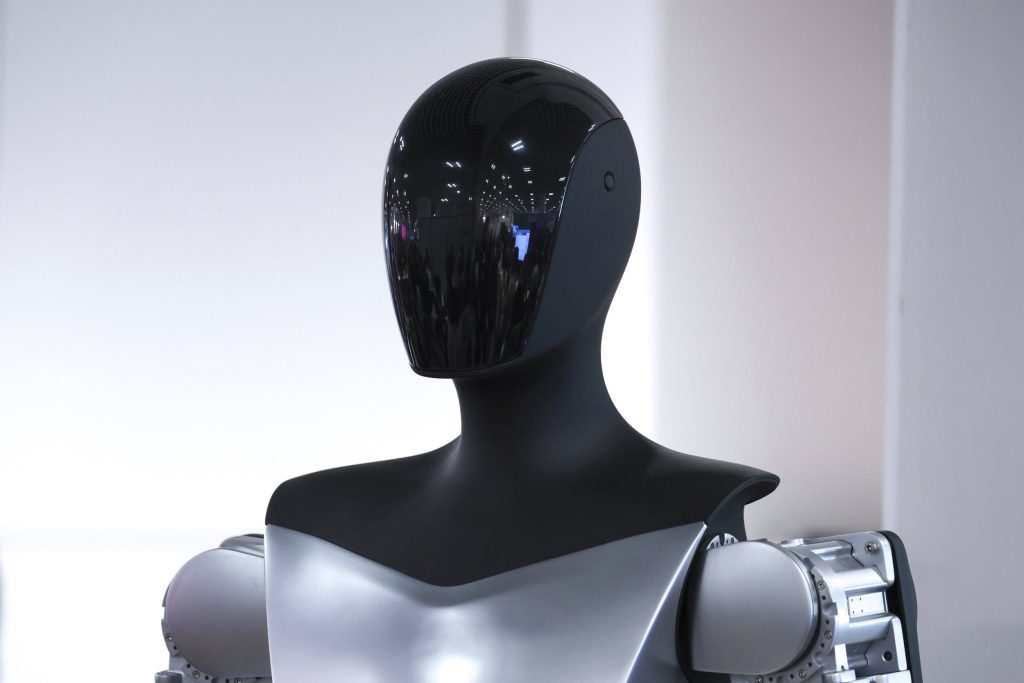The Dawn of Humanoid Robots: China Takes the Lead in Mass Production
The realm of robotics has witnessed a significant leap forward with the announcement by AgiBot, a Chinese technology startup, of the commencement of mass production of general-purpose humanoid robots. This development marks a pivotal moment in the evolution of automation, potentially revolutionizing industries and daily life. AgiBot, also known as Zhiyuan, has already manufactured nearly 1,000 of these robots at its Lingang Fengxian factory in Shanghai, showcasing its commitment to pushing the boundaries of robotics innovation. This accomplishment places China at the forefront of humanoid robot development, igniting a competitive landscape with the United States, where companies like Tesla are also actively pursuing the creation of commercially viable humanoid robots.
AgiBot’s achievement is underscored by a comprehensive video showcasing its robotic production line, which encompasses inventory shelving, component assembly, testing, and performance evaluation. Notably, some of the pre-made robots are actively involved in the production process, demonstrating their practical capabilities. The company emphasizes its focus on "full-stack technology development," encompassing both wheeled and bipedal robots. AgiBot’s vision extends beyond mere automation; the company aims to develop robots with advanced dexterity, enabling them to perform intricate tasks mimicking human capabilities. This pursuit involves extensive data collection to enhance AI training, equipping the robots with "intelligent brains" capable of seamless interaction with their surroundings.
This breakthrough in China coincides with ongoing efforts in the United States, where Tesla is developing its own humanoid robot, Optimus. While Tesla has not yet announced mass production plans, CEO Elon Musk has projected that the robots will be ready for internal use at Tesla in 2025 and available for other companies by 2026. This timeline suggests a competitive race between China and the US to bring humanoid robots to the commercial market. Tesla envisions Optimus performing a wide range of tasks, from mundane chores to complex activities, essentially acting as a versatile assistant in various settings. Musk’s portrayal of Optimus suggests a focus on general-purpose applications, catering to both personal and professional needs.
The contrasting approaches of AgiBot and Tesla reveal distinct visions for the future of humanoid robots. AgiBot emphasizes precision and intricate task execution, potentially targeting specific industries requiring fine motor skills. In contrast, Tesla’s Optimus appears geared towards broader applications, aiming to integrate into daily life and assist with a variety of tasks. This divergence highlights the evolving nature of robotics, with different companies exploring diverse paths towards realizing the potential of humanoid robots.
AgiBot’s announcement has sparked considerable enthusiasm within the robotics community and beyond. The company’s commitment to commercial mass production signals a tangible step towards integrating humanoid robots into various aspects of life. While challenges undoubtedly remain in terms of technological refinement and ethical considerations, the progress made by AgiBot indicates the rapidly approaching reality of robots playing a significant role in both professional and personal spheres. This development has garnered attention on social media platforms, with commentators highlighting the significance of China’s progress in the race to develop and deploy humanoid robots.
Looking ahead, the mass production of humanoid robots by AgiBot has set the stage for a transformative era in automation and artificial intelligence. The capabilities of these robots are poised to reshape industries, streamline workflows, and potentially redefine how we interact with technology in our daily lives. As the technology matures and becomes more accessible, the societal implications of widespread robot integration will necessitate careful consideration. The race between China and the US to lead this technological frontier adds another layer of complexity, potentially influencing global standards and regulations related to robotics and AI. The rapid advancements in this field promise an exciting yet uncertain future, demanding continued exploration and responsible development to harness the full potential of humanoid robots while mitigating potential risks.










